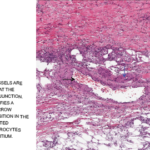 Considering the well-established benefits of proper exercise and joint protection for patients with rheumatic diseases, physical therapists (PTs) and rheumatologists should be formidable allies in treating patients with chronic, inflammatory diseases, according to the 2016 recipient of the ARHP Addie Thomas Service Award, Carol Oatis, PT, PhD.
Considering the well-established benefits of proper exercise and joint protection for patients with rheumatic diseases, physical therapists (PTs) and rheumatologists should be formidable allies in treating patients with chronic, inflammatory diseases, according to the 2016 recipient of the ARHP Addie Thomas Service Award, Carol Oatis, PT, PhD.
Unfortunately, it’s not always easy to develop a good partnership between rheumatology and physical therapy. Access and cost are some of the most common issues facing providers, according to Dr. Oatis, who is a professor in the Department of Physical Therapy at Arcadia University in Glenside, Pa. Less common issues include ineffective communication and a dearth of face time between rheumatology and PT trainees.
“The relationship between [the] rheumatologist and [PT] is a very important one,” Dr. Oatis says. “One of the challenges is that there are about 6,400 practicing rheumatologists in the country and about 210,000 PTs.1,2 So there are a lot of PTs who don’t know a rheumatologist. I think rheumatologists and PTs have similar goals as they approach patients. PTs want to improve function and decrease pain in these patients. I think the collaboration is essential for optimal outcomes.”
Dr. Oatis, a past president of the ARHP who is best known for her textbook, Kinesiology: The Mechanics and Pathomechanics of Human Movement, explains the first step to improved patient care is recognizing PTs and rheumatologists have different points of view.
“In terms of diagnosis, a rheumatologist diagnoses patients medically. PTs diagnose patients functionally—to identify functional problems and movement disorders,” she says. “Those are very different roles in the diagnostic process. Medical diagnoses are often associated with or lead to movement disorders. And [the diagnosis of] movement disorders can often be based on [the presence of] medical disorders. And so, again, there is collaboration. They don’t necessarily diagnose the same thing, but they find diagnoses that are related to one another in the same patient.”
The second step is having PTs and rheumatologists form collaborative, working relationships. “Go meet the rheumatologists. [PTs] have lots to offer them. Rheumatologists have lots of patients you could help. Go find them, and get to know them,” Dr. Oatis says, emphasizing that rheumatologists should target working relationships with PTs who are familiar with rheumatologic diseases. “PTs have something to offer patients with fibromyalgia, lupus and ankylosing spondylitis. [PTs need] to know what those conditions are and recognize what we’ve got to offer those patients. We need to be familiar with the disease process and the literature.”



